The National Feral Pig Action Plan
Mid West Feral Pig Demonstration Site, Western Australia
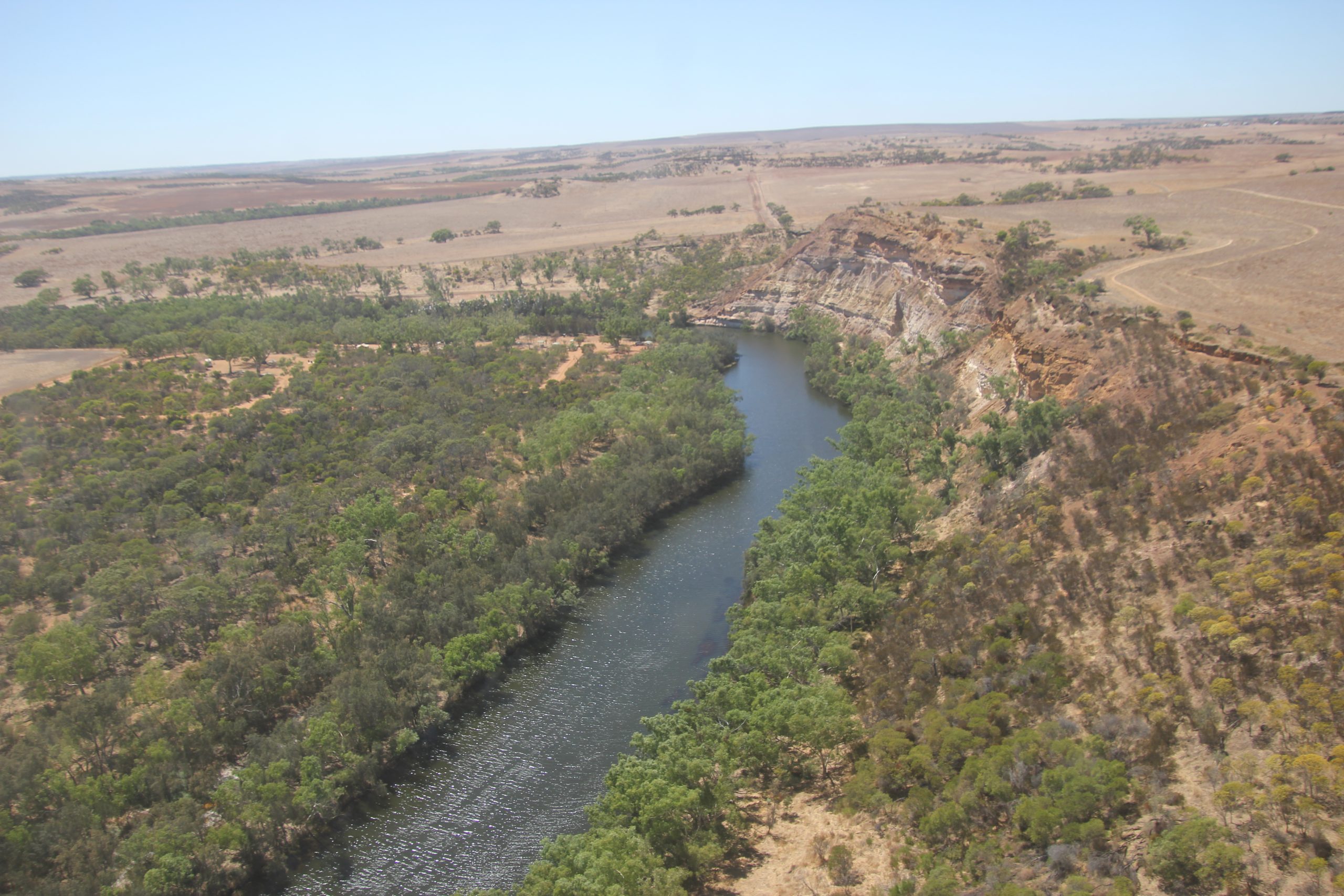
The Mid West Feral Pig Demonstration Site is located in the Northern Agricultural Region of Western Australia. This site exemplifies the collaborative efforts in coordinating vertebrate pest management activities of three Recognised Biosecurity Groups (RBGs):
- the Northern Biosecurity Group (NBG),
- the Central Wheatbelt Biosecurity Association (CWBA), and
- the Midlands Biosecurity Group (MBG).
Collectively, the three RBGs cover an area of 100,000 km².
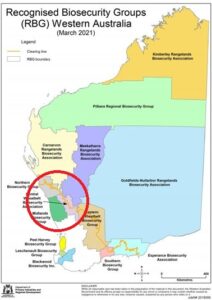
What's been achieved
Central Wheatbelt Biosecurity Association
- In the CWBA region, 1,551 feral pigs have been trapped or baited through LPMT-supported and landholder-led control programs.
- Since 2018, the feral pig average catch per unit effort has decreased in the CWBA region. This suggests that the feral pig population in the CWBA region has likely declined since 2018.
Midlands Biosecurity Group
- The MBG has committed additional ground resources to support landholders with trapping and baiting activities since 2020.
- Control has been across the Shires of Irwin, Three Springs, Coorow and Dandaragan
- During this time a total of 3658 pigs have been baited or trapped in the MBG region in addition to the efforts of the MBG/CWBA combined project.
- In 2024, MBG LPMTs began a control program on select DBCA Managed land in conjunction with landholder efforts, with 241 feral pigs controlled to date.
Central Wheatbelt Biosecurity Association and Midlands Biosecurity Group
- The Central Wheatbelt Biosecurity Association (CWBA) and Midlands Biosecurity Group (MBG) commenced their annual aerial control program in 2018. In 2023/24, this program was expanded to four periods across the year and a zonal approach, based on that implemented by the Kangaroo Island Feral Pig Eradication Program, has been applied
- Across regions covered by the CWBA and MBG, 4,372 feral pigs have been removed by aerial culling over 207.5 hours of flying time.
Northern Biosecurity Group:
2018 – 2024
- The NBG has coordinated and funded an annual aerial cull program in parts of the region since 2018.
- Over 8 shoots from 2018-2024, a total of 13,422 feral pigs were removed in 286 hours of aerial culling flight time.
- In addition to the aerial culls, Local Pest Management Technicians (LPMTs) collaborated with landholders to support their ground control activities, trapping and baiting. These included community baiting days and individual events.
- The Department of Primary Industries and Regional Development reviewed a subset of NBG’s aerial cull data in 2024 and recommended the management effort be increased by a factor of 2.5 annually to effectively reduce feral pig density.
- The DPIRD’s review determined that, despite extensive efforts in the NBG region from 2018-2024, the average catch per unit effort (of feral pigs) in aerial culls did not decrease significantly. This indicates no substantial decline in feral pig population.
2025
- In January 2025, the NBG moved to a zoned approach for the management of feral pigs. The zones were determined by previous data and from landholder reports.
- From January to June 2025, a combined effort of NBG ground and aerial culling has removed 11,500 feral pigs across the region. These data do not include landholder control efforts and counts.
Background of Program
To maintain sustainable grain and livestock industries in the Mid West region of Western Australia, by reducing the risks to agricultural production posed by feral pigs and mitigating their impacts on the natural environment.
We are striving to achieve this by:
- Supporting coordinated feral pig management on a nil-tenure basis using approved control techniques effectively and ethically.
- Raising awareness among landholders and the community about feral pig impacts and best-practice management techniques.
Actively engaging in relevant research and development activities to better understand feral pig behaviour and abundance and using findings to enable land managers to confidently and successfully implement on-ground management actions.
Across most Local Government Areas (LGAs) within the Mid West Feral Pig Demonstration Site, feral pigs are common and predominantly found near water sources. Anecdotal observations indicate that these pigs do not have a preferred habitat/vegetation type as they are encountered in different environments, ranging from soaks in broadacre paddocks to rocky breakaways near reserves.
With recent sightings close to the pastoral boundary, it is considered that the distribution of feral pigs is extending eastward. This was validated in May 2024 during an aerial surveillance flight, with a large mob of feral pigs observed on Barnong Nature Reserve, 60 km west of Yalgoo.
Who's involved?
The Mid West Feral Pig Demonstration Site involves three RBGs: the Northern Biosecurity Group (NBG), the Central Wheatbelt Biosecurity Association (CWBA), and the Midlands Biosecurity Group (MBG). These groups are in the Northern Agricultural Region of Western Australia.
A Recognised Biosecurity Group (RBG) is a mechanism established under the Biosecurity and Agriculture Management Act 2007 (BAM Act) in Western Australia. It enables landholders and managers to develop a coordinated approach to declared pest control in their area, supporting their individual responsibilities as land managers. As of June 2024, fourteen RBGs are in place in Western Australia.
To access funding under the BAM Act, RBGs must provide the Director General of the Department of Primary Industries and Resource Development (DPIRD) with a Declared Pest Action Plan. This plan informs the determination of the Declared Pest Rate (DPR), which the Director General requests the Minister to impose. DPRs are matched dollar-for-dollar by the state government. This funding can only be used for declared pest control under an approved Declared Pest Action Plan.
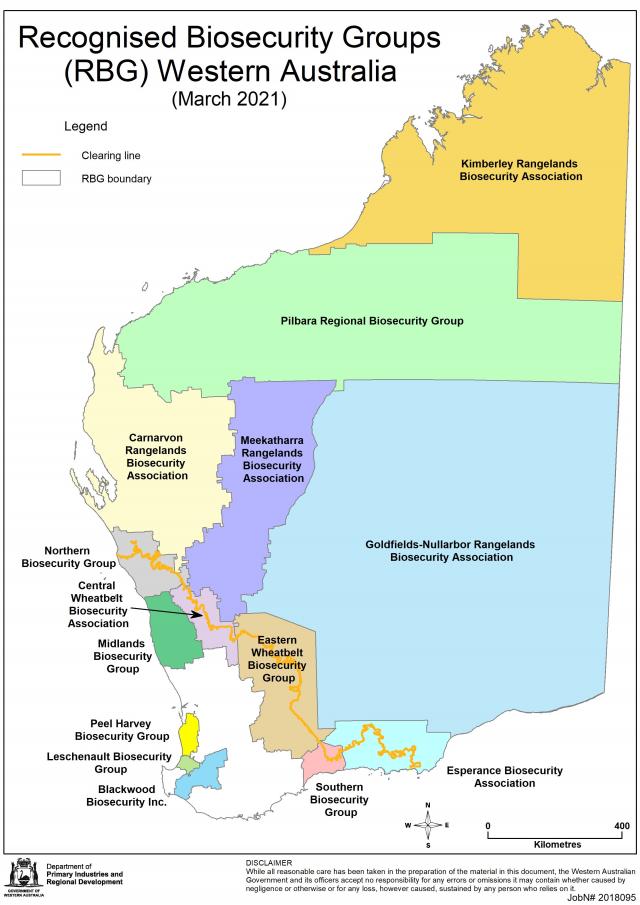
Activities being conducted
Each RBG involved in this demonstration site facilitates and coordinates its own integrated feral pig management program. Declared Pest Rates are used to contract Licensed Pest Management Technicians (LPMTs), who work with local landholders and the community to conduct coordinated ground baiting and trapping across the Mid West region. Feral pig hotspot areas are identified based on LPMT and landholder reports.
Landholders are encouraged to report any sightings and damage to the RBG’s via their websites. The image below shows the reporting form from the NBG’s webpage. If the landholder is reporting damage, further questions are asked regarding area of damage, cost to repair damaged asset and estimated cost of damage.
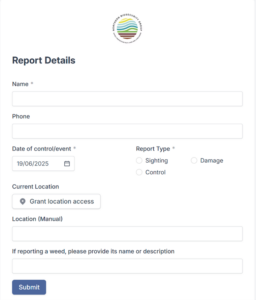
Whatsapp messaging groups are utilised in the CWBA and MBG, with a smaller number of landholders, and are a quick and reliable way of communicating feral pig presence for immediate action and direct engagement with the landholders. This has proved to be a successful communication channel for these groups.
Landholders with a current Restricted Chemical Product (RCP) Permit can participate in any of the organised community baiting days during the summer months. These baiting days are organised across the region, providing opportunities for neighbouring landholders to ask questions and consult with their local Licensed Pest Control Technician on pre-feeding requirements and baiting techniques. Chemical and mixing costs are covered by the RBG.
All three RBGs have invested in a range of high-quality trapping equipment, including PigBrig and Matlock traps. Traps can be set up by the local LPMT or monitored and set by the local landholder. The Matlock trapping system allows landholders to monitor feral pig numbers in and around the trap via a remote real-time video link. The door is closed via an app only when all pigs have entered the trap, preventing pigs from becoming trap shy.
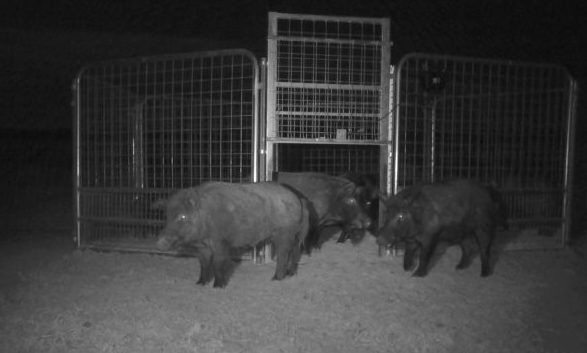
Central Wheatbelt Biosecurity Association (CWBA) and Midlands Biosecurity Group (MBG) joint aerial program
For their 2023-2024 Operational Plan, the Central Wheatbelt Biosecurity Association (CWBA) and Midlands Biosecurity Group (MBG) jointly adopted a new strategy inspired by the Kangaroo Island Feral Pig Eradication Program. The feral pig area was divided into four zones and four aerial culling programs were conducted in August and November 2023, and February and May 2024. The goal was to spend increased hours in each zone to cull every feral pig encountered, without being limited by flying hours (within budget). This approach has significantly lowered the number of feral pigs aerially culled in the region over the last 12 months.
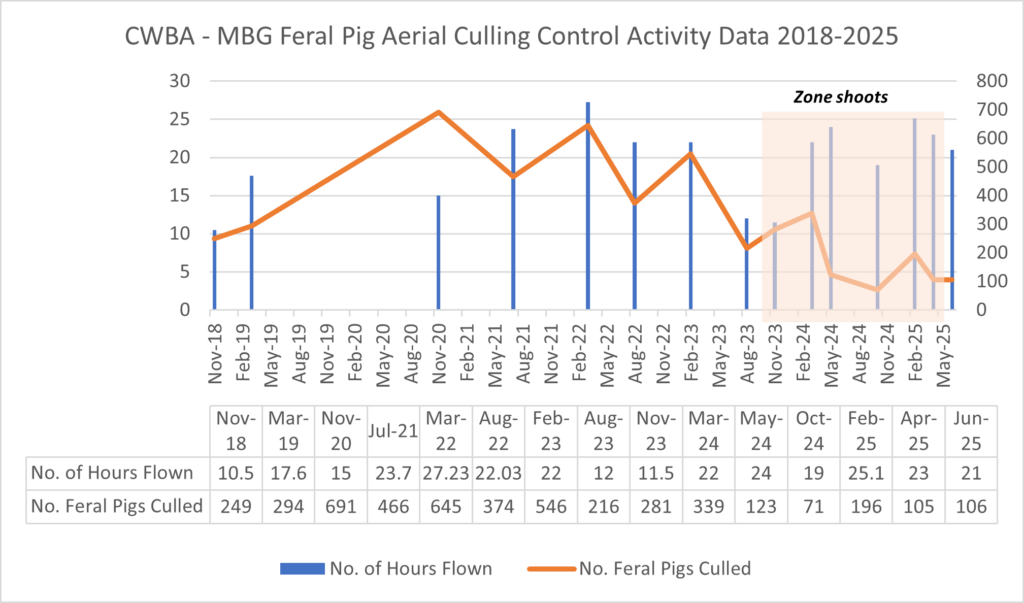
This new approach was featured in the NFPAP newsletter in the July 2024 edition and the April 2025 edition.
Northern Biosecurity Group
In the past, the NBG conducted one aerial cull a year, increasing flying hours each year and consistently culling more feral pigs. In 2022, the NBG also conducted a second aerial shoot.
In 2025, the NBG adopted a zone approach for the management of feral pigs.
From July 2025, the approach will involve completing groundwork in a zone, i.e. trapping and baiting, for a period of 6-12 weeks before an aerial cull, and again after the aerial cull to try and limit the reestablishment of pig populations. This approach reduces the pig density and allows the identification of key areas of pig habitation. Furthermore, it allows incidental control of other declared pests in the zones, such as feral cats and foxes.
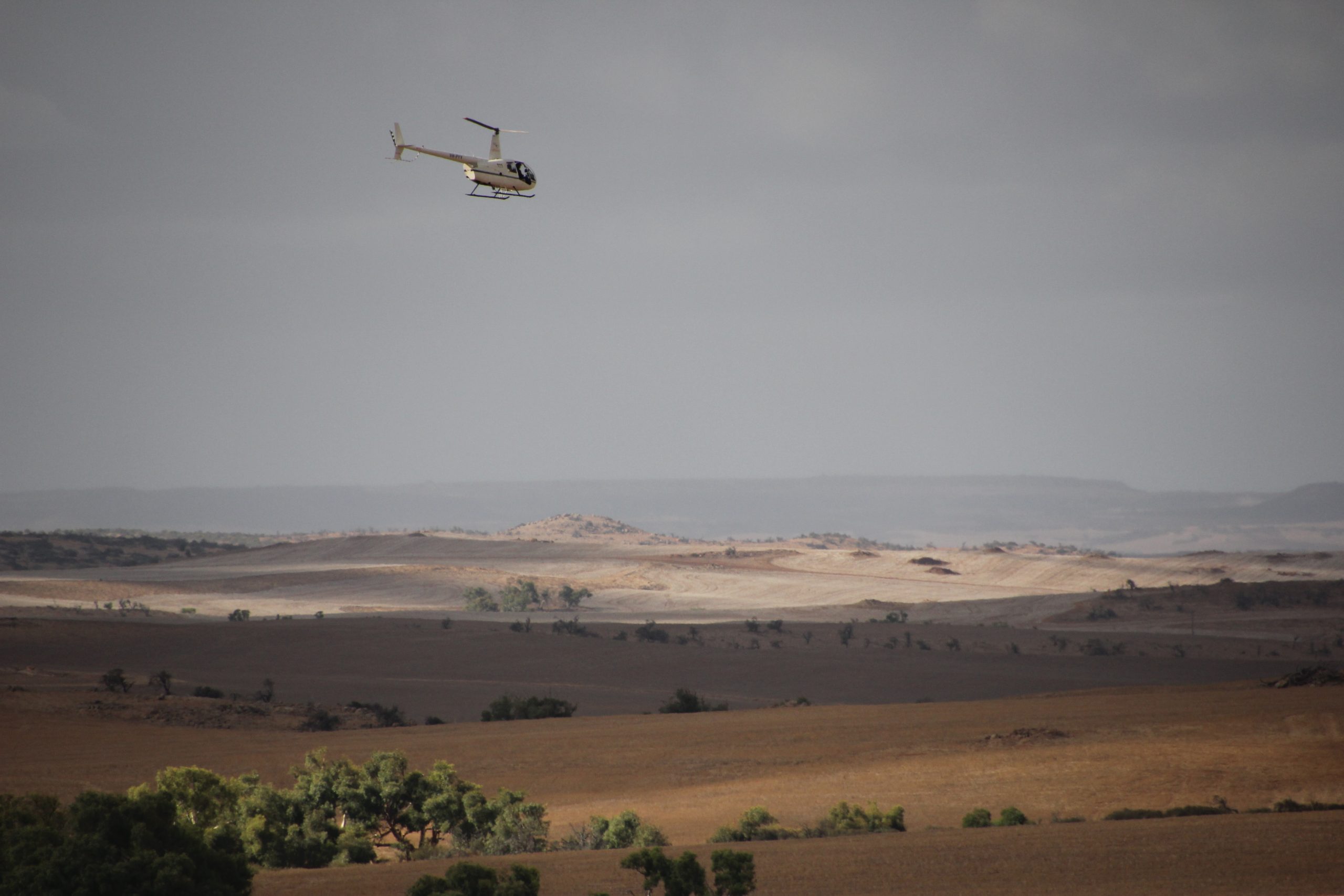
In conjunction with the NBG aerial control program between 2018-2024, the DPIRD investigated the feral pig population’s response to coordinated control in the region.
The DPIRD focussed on investigating the population dynamics of a subset of feral pigs shot during the program, as well as determining their dietary preferences.
From 2018 – 2023, 1,497 feral pigs were dissected during aerial shooting operations.
Population dynamics
- 51% of sampled animals were female and 49% male.
- The average weight was 38.9 ± 24.6 kg, with males being heavier than females.
- The average age was 10.3 ± 8.5 months, with males being older on average than females.
- The population of feral pigs is predominantly composed of animals under 1 year old, with very few pigs sampled exceeding 24-30 months of age.
- 75% of sexually mature females were pregnant or had young.
Diet
- Majority wheat, with some other grains
- Average adult stomach contents 1.342 kg
- Mean Retention Time for stomach is 1-4 hours (Wilfart et al. 2007) i.e. the previous night’s grazing.
Average catch per unit effort (CPUE) is a basic measure of control operation efficiency. A declining feral pig population should result in a decrease in CPUE over time.
In the DPIRD’s review of a subset of NBG’s aerial cull data, it was determined that despite extensive efforts in the NBG region between 2018-2024, the feral pig average catch per unit effort did not decrease significantly. This indicates that the efforts did not result in a substantial decline in feral pig population.
The average CPUE for feral pigs in the CWBA region increased between 2018 and 2020. However, since 2020, CPUE has decreased, indicating a decline in feral pig abundance.
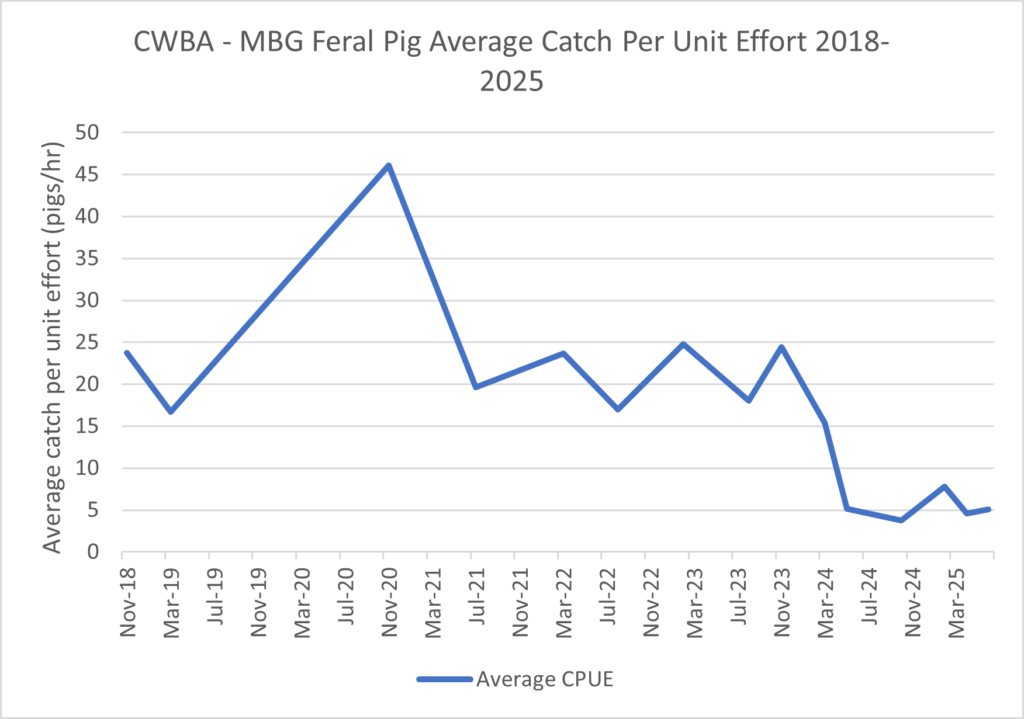
A camera trap monitoring program was initiated in January 2018 to assess the impact of feral pig management strategies across the region. This program was conducted in partnership with the Department of Primary Industries and Regional Development (DPIRD). Thirsty six cameras were installed in the Northampton project area where annual aerial shooting programs are conducted by the NBG.
More recently, the three RBGs have collaborated to invest in a feral pig and wild dog camera surveillance project. This two-year initiative was jointly funded by the Department of Agriculture, Fisheries and Forestry, as part of its $30.3 million Established Pest Animals and Weeds Management Pipeline Program, and DPIRD. An additional 90 cameras were installed throughout the three RBG regions. Automated image analysis, including facial recognition using eVorta software, has been used to monitor populations of invasive animals.
This data is being used to enhance understanding of changes in population sizes in response to coordinated management programs and seasonal conditions. Automated image analysis is providing timely information to individual landholders and the RBGs about feral pig and wild dog movements and occurrences. This system improves the cost-efficiency of image processing and analysis by eliminating the extensive time and labour required for manual data collection from SD cards and image trawling.
Additionally, a project funded by the Centre for Invasive Species Solutions, in collaboration with DPIRD WA, DAF QLD, and DPI NSW, was conducted to develop automated software to detect pest animals, including feral pigs, from thermal imagery. More information about this project can be found here.
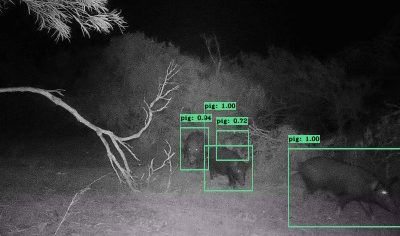
The Northern Biosecurity Group (NBG) have utilised GPS collars to gain insights into feral pig movements throughout different seasons and during both on-ground and aerial control programs. A total of 31 collars were deployed and it was found that collared pigs exhibit minimal movement within their habitat (<2 km radius). These collared pigs were observed on monitoring cameras operated by other organisations, captured in traps set by landholders, and sighted during aerial culling programs. This comprehensive data collection is invaluable to the NBG’s feral pig management activities.
In June 2021, the Department of Primary Industries and Regional Development (DPIRD) conducted surveys across 70 transects in the NBG region (Northampton area) to estimate the abundance and density of feral animals in the landscape. Feral pigs are particularly suitable for thermal imaging due to their minimal fur and lack of sweat glands. This means that they radiate a significant amount of heat, enabling them to be easily detectable, like glowing blobs on the landscape.
Feral pigs were the predominant pest species observed within the Northampton pilot survey area, with an estimated density of 11.2 pigs per square kilometre in hotspot areas. This density is higher compared with other regions across Australia where thermal surveys have been conducted (note: feral pig densities vary across different landscapes; Mid West WA is highly productive with abundant food, water, and shelter).
The extent of the feral pig population that poses a threat to agricultural assets and threatened flora and fauna remains uncertain.
Funding
Each RBG raises a Declared Pest Rate from landholders in their area of management, which is matched dollar for dollar by the State Government. This funding can be used for the control of declared pests, in the relevant region.
In the media
Further Information
NFPAP feature articles
Aerial control culls record numbers of feral pigs- March 2022
Co-ordinated ground and aerial control of feral pigs is steadily reducing their impacts– April 2022
MidWest demonstration site – Zoned In: Enhancing Feral Pig Management in the Northern Agricultural Zone, WA – July 2024
The journey to effective feral pig management: zonal approach – April 2025
Official pages
Midlands Biosecurity Group Western Australia
Central Wheatbelt Biosecurity Association
Other resources
Contact
Executive Officer, Northern Biosecurity Group, eo@nbg.org.au
Executive Officer Central Wheatbelt Biosecurity Association, eocwba@outlook.com
Executive Officer, Midlands Biosecurity Group, eo@mbg.org.au
Figures and photos have been supplied by Northern Biosecurity Group (NBG), Central Wheatbelt Biosecurity Association (CWBA) and Midlands Biosecurity Group (MBG) and DPIRD and the National Feral Pig Action Plan.